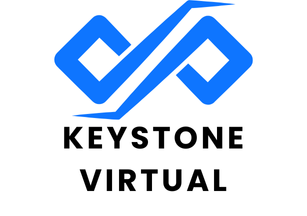Kubernetes Role-Based Access Control (RBAC) can be daunting, yet mastering it is essential for securing your clusters. Fine-tuning access control not only protects sensitive data but also streamlines operations. This guide offers a clear, step-by-step approach to optimize RBAC configurations. Whether you're a novice or an experienced user, you'll find practical insights to effectively manage permissions and enhance the overall security posture of your Kubernetes environment. Let’s transform your access control strategies today!
Understanding Kubernetes RBAC
Kubernetes RBAC (Role-Based Access Control) is a critical component for managing access and ensuring security within a Kubernetes environment. It allows administrators to define permissions for users and applications, thereby enhancing both security and compliance.
Also read : Mastering Microservices Security: A Comprehensive Guide to Implementing mTLS in Kubernetes Communication
Overview of Role-Based Access Control in Kubernetes
The Role-Based Access Control system in Kubernetes enables fine-grained control over access to resources. By assigning specific permissions to users or groups, it ensures that only authorized entities can perform certain actions within the cluster. This is crucial for maintaining a secure and well-organized infrastructure.
Importance of RBAC for Security and Compliance
Implementing RBAC is essential for adhering to security best practices and regulatory compliance. By controlling who can access what resources, organizations can prevent unauthorized access and potential breaches. It also assists in auditing and monitoring activities, providing a clear trail of who did what within the system.
Also to discover : Mastering Secure File Transfers: A Comprehensive Guide to Setting Up SFTP with AWS Transfer Family
Key Components: Roles, RoleBindings, ClusterRoles, and ClusterRoleBindings
- Roles: Define permissions within a namespace.
- RoleBindings: Associate users or groups with a Role.
- ClusterRoles: Similar to Roles but applicable across the entire cluster.
- ClusterRoleBindings: Link users or groups to a ClusterRole.
These components work together to create a robust access management framework, ensuring that Kubernetes environments remain secure and compliant.
Configuring RBAC: Step-by-Step Guide
RBAC Configuration in Kubernetes is essential for implementing effective Access Control Setup. This guide provides a detailed walkthrough to help you configure Kubernetes Roles and bindings efficiently.
Setting Up Roles and RoleBindings
To begin the RBAC Configuration, you need to define Kubernetes Roles. These roles specify permissions within a namespace. Use kubectl create role to establish roles tailored to your access needs. Next, create RoleBindings using kubectl create rolebinding to associate users or groups with these roles. This binds the specified permissions to the appropriate entities, ensuring that only authorized users can access certain resources.
Creating ClusterRoles and ClusterRoleBindings
For cluster-wide permissions, create ClusterRoles using kubectl create clusterrole. These roles function similarly to namespace roles but apply across the entire cluster. Once defined, use kubectl create clusterrolebinding to establish ClusterRoleBindings. This links users or groups to ClusterRoles, granting them the necessary permissions throughout the cluster.
- Best Practices:
- Use clear naming conventions for roles and bindings to maintain organization.
- Regularly audit and update roles to reflect changes in team structure or responsibilities.
- Limit permissions to the minimum necessary to reduce security risks.
By following these steps, you can ensure a secure and organized Access Control Setup in your Kubernetes environment.
Fine-Tuning Access Control
In the realm of Kubernetes, Fine-Tuning RBAC is pivotal for maintaining a secure environment. By carefully managing Access Control Policies, organizations can ensure that permissions are precisely aligned with user needs, minimizing potential risks.
Strategies for Least Privilege Access
Implementing a least privilege access strategy involves granting users the minimum permissions necessary for their tasks. This approach reduces the attack surface by limiting what each user can access. Start by analyzing user roles and responsibilities to tailor permissions accordingly. Regular reviews and adjustments to Access Control Policies help maintain this principle effectively.
Implementing Custom Roles for Specific Use Cases
Creating custom roles allows for more granular Permission Management. These roles can be designed for specific applications or functions, ensuring that users have precisely what they need to perform their duties efficiently. By using kubectl, administrators can define and apply these roles, aligning access with organizational requirements.
Monitoring and Auditing Access Control Changes
Continuous monitoring and auditing of access control changes are essential for maintaining security. Implementing tools that track changes in permissions and role assignments can alert administrators to unauthorized modifications. Regular audits provide insights into access patterns, ensuring compliance with security policies and enabling swift responses to potential threats.
Troubleshooting Common RBAC Issues
Navigating RBAC Troubleshooting can be daunting, but understanding the root causes of Access Control Issues is vital for maintaining a secure Kubernetes environment. This section provides insights into diagnosing and resolving common RBAC challenges.
Identifying Permission Denied Errors
Permission denied errors are frequent in Kubernetes and often stem from incorrect Access Control configurations. To resolve these, first verify that the RoleBindings or ClusterRoleBindings are correctly associated with the intended users or groups. Check that the roles or cluster roles grant the necessary permissions for the actions being attempted. Misconfigured bindings or insufficient permissions are typical culprits.
Using kubectl to Diagnose RBAC Problems
kubectl is an invaluable tool for Debugging RBAC issues. Start by using kubectl auth can-i to simulate and verify if a specific action is allowed for a user. This command helps pinpoint whether the problem lies in the permissions setup. Additionally, review the kubectl describe command output for roles, role bindings, cluster roles, and cluster role bindings to ensure all configurations align with intended access policies.
- Tools and Techniques:
- kubectl auth can-i: Test permission scenarios.
- kubectl describe: Examine role and binding details.
- Regularly review audit logs to track unauthorized access attempts.
With these strategies, you can effectively address and mitigate RBAC Troubleshooting challenges.
Advanced Techniques in RBAC Management
In the evolving landscape of Kubernetes, mastering Advanced RBAC Techniques is essential for maintaining robust security and efficiency. These strategies offer Fine-Grained Access Control and enhance the overall management of Kubernetes environments.
Implementing Namespace-Specific RBAC Policies
By applying namespace-specific RBAC policies, administrators can tailor access controls to the unique requirements of each namespace. This approach provides a more precise allocation of permissions, ensuring that users have access only to the resources they need. It involves crafting roles and bindings that are confined to specific namespaces, thus offering a Fine-Grained Access Control mechanism that bolsters security.
Leveraging External Authentication for RBAC
Integrating external authentication systems with Kubernetes RBAC can streamline user management and enhance security. By leveraging identity providers like LDAP or OAuth, organizations can centralize authentication processes, simplifying access control. This integration ensures that RBAC strategies remain consistent across platforms, reducing the risk of unauthorized access.
Integrating RBAC with CI/CD Pipelines
Incorporating RBAC into CI/CD pipelines strengthens the security of automated workflows. By defining roles and permissions within the pipeline, organizations can control access to deployment resources and actions. This integration ensures that only authorized processes can execute changes, maintaining the integrity of the deployment lifecycle and supporting comprehensive RBAC Strategies.
Real-World Scenarios and Examples
Exploring RBAC Real-World Examples provides a practical understanding of its applications and effectiveness in different settings. These Case Studies illustrate how organizations leverage RBAC to manage access efficiently and securely.
Case Study: Managing Access in a Multi-Tenant Environment
In a multi-tenant setup, Practical Applications of RBAC are crucial for isolating resources among different tenants. Each tenant requires distinct access policies to ensure data privacy and security. For instance, a cloud service provider implemented RBAC to assign ClusterRoles specific to tenant administrators, limiting their access to only their respective namespaces. This approach not only safeguarded data integrity but also streamlined administrative tasks, reducing potential errors in access management.
Example: Creating a Custom Role for Developers
Creating a Custom Role for Developers is a common RBAC Real-World Example that enhances productivity while maintaining security. By defining a role that grants developers access to deployment resources but restricts administrative functions, organizations can empower developers without compromising the cluster's integrity. This Practical Application ensures that developers have the necessary tools to work efficiently, while sensitive operations remain protected.
- Lessons Learned:
- Tailoring roles and permissions to specific needs enhances security.
- Consistent monitoring and updating of roles prevent unauthorized access.
- Collaboration between IT and development teams is vital for effective RBAC implementation.











